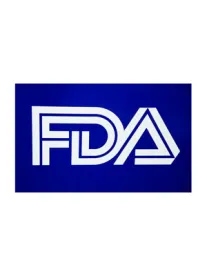As is the tradition here, towards the end of the year we take stock of what transpired in our respective industries and highlight important legal, regulatory, and business developments. For those of us who monitor the Food and Drug Administration (FDA or the Agency) and counsel FDA-regulated entities, it has certainly been a whirlwind of a year.
2017 began with no clear picture of who would be assuming leadership of the Agency, but also with a brand-new piece of critically important (and bipartisan!) legislation – the 21st Century Cures Act – which imposed new obligations and authorities on FDA that needed to be implemented, operationalized, and fully funded. In early May, Dr. Scott Gottlieb was sworn in as the 23rd Commissioner of FDA and he moved quickly to shift policy priorities in almost every area that the Agency regulates, a goal that in some ways was made more efficient due to the concurrent timing of modernization mandates imposed by the Cures Act. This year’s must-pass User Fee Act, the FDA Reauthorization Act or “FDARA” engendered some hand-wringing and political drama over the summer, but was ultimately passed by Congress in August and signed into law. FDARA includes some important policy and programmatic changes for new prescription drugs/biologics, generic drugs, and biosimilars, but it did not contain major wholesale reforms to the Agency’s authorities due to the very recent passage of the Cures Act.
This is the first in a series of three installments that will review the actions FDA took in 2017, reflect on what they may mean for regulated industry, and provide a few predictions for 2018. This first installment, which will be broken up into two posts, focuses on therapeutic products; that is, drugs, biologics, human cells and tissue products, and gene therapies. Our subsequent posts will focus on medical devices and diagnostics, including whole-genome sequencing tests, and digital health and other software-related developments, respectively.
FDA’s Drug Competition Action Plan = More Generics and Biosimilars to Market
It will come as no surprise to our regular readers – or to anyone who reads anything for that matter – that high drug prices are a bipartisan “thing” right now and it is all hands on deck to fix the problem. From even before Day 1, given his prior scholarship on this issue, Commissioner Gottlieb was expected to shake things up at FDA and to use existing legal authorities more actively and creatively to foster greater competition; reduce unnecessary regulatory barriers to market; and generally help get generic and biosimilar markets working better for consumers – i.e., by lowering overall drug costs. Since we’re only six months into implementation of Dr. Gottlieb’s multi-pronged, self-named Drug Competition Action Plan, it remains to be seen whether he achieves that bottom-line impact on the markets. But without a doubt, Agency leadership has been taking bold and decisive actions towards that goal, several of which we blogged about earlier in the year (see here and here). Many new guidance documents have been issued for Abbreviated New Drug Application (ANDA) applicants, including a Draft Guidance on Formal Meetings Between FDA and ANDA Sponsors of Complex Products (think EpiPen) intended to expedite the development of such complex products. These efforts are very much welcomed by the generic drug industry, who negotiated significant changes to the Generic Drug User Fee Act as part of its first reauthorization cycle with FDARA.
FDA also hosted its own public meeting in July to discuss whether its administration of the Hatch-Waxman Amendments, which created today’s marketing pathway for generic drugs, is striking the right balance between innovation and access to lower-cost alternative treatments.[1] Then in November, Commissioner Gottlieb participated in a Federal Trade Commission workshop on the issue of competition on prescription drug markets. And as promised back in June when it published the first iteration of this list, FDA released on December 15th an update to its new “List of Off-Patent, Off-Exclusivity Drugs without an Approved Generic.” (We haven’t compared this list to June list to see what happened to the numbers, but are definitely interested to see that analysis!)
Intriguingly, speaking at a conference in Washington, D.C. on December 5th, Dr. Gottlieb hinted at a significant policy announcement being planned for the beginning of 2018 on the topic of increasing competition in markets for biological products. FDA has continued to make progress in its implementation of the Biologics Price Competition and Innovation Act (BPCIA), which created the formal marketing pathway for biosimilar products, having approved 4 biosimilar applications this year (including the first biosimilar treatment for cancer, see here). The Agency also got the Biosimilar User Fee Act reauthorized as part of FDARA; issued a new draft guidance on Statistical Similarity to Evaluate Analytical Similarity; and has recently updated its online BPCIA public resources and provider training materials in a pretty nice way. But since the Obama Administration issued the long-awaited draft guidance on demonstrating Interchangeability with a Reference Product back in mid-January, it seems fair to say that this year most of the BPCIA action came out of the Supreme Court and other federal courts. So we will be watching for Dr. Gottlieb’s promised policy announcement on biologics and biosimilars in early 2018.
Breakthrough Therapy and Other Expedited Development/Approval Pathways on the Rise
Another exciting trend in the therapeutics space this year was the pace and revolutionary nature of newly approved, first-in-class drug and biological therapies. As of November 30, 2017, the Agency had approved 40 new molecular entities (NMEs) this calendar year and 17 of those were for orphan (rare disease) indications. This number is very high for NME approvals and – given that December is not included in the total – 2017 could be a historic year for this important FDA metric. The existing record for single-year NME approvals is from 1996 (53 total), which may have been somewhat of an outlier year; 2015 holds the second-place record with 45 such approvals and, after a lackluster 2016, it would be exciting if this year comes in above or on par with 2015.
In addition, 17 of those 40 NMEs had been designated and developed as Breakthrough Therapies – the highest annual approval count to date since the Breakthrough program was created by Congress as part of the 2012 user fee-reauthorization cycle. 28 of the NMEs had been reviewed under Priority Review, and 18 were designated for the Fast-Track Program, which also represents a record annual number for fast-track. It’s also worth noting that the majority of these innovative products took advantage of more than one expedited program, with over 2/3 of this year’s drug and biologic (NDA and BLA) approvals using more than one.
Besides the sheer number of new drug and first-in-class approvals, several incredible medical advances were approved by FDA and commercially launched this year. These include the first two approved CAR-T therapies, in which a patient’s own immune cells are re-engineered using gene therapy tools to target the patient’s individual cancer, one for children and one for adults (see here and here). CAR-T represents a transformative treatment for cancer patients, and the two newly approved products also represent some of the first personalized cell therapies to get to market. Another ground-breaking approval from 2017 was the first cancer treatment to target a specific biomarker rather than a particular organ where tumors originated, meaning it can be used to treat patients with many different forms of cancer as long as the underlying DNA defect causing the cancer meets the appropriate profile. Much of the success of these revolutionary treatments within the U.S. regulatory process, especially how quickly they were reviewed by FDA, can likely be attributed to the new Oncology Center of Excellence (OCE). OCE has proven so successful in its first year of operation that Commissioner Gottlieb has recently been reported to be mulling the possibility of extending the model to other areas, like neurological disease.
Other disease states also benefited from positive developments in 2017, such as the cystic fibrosis community, which saw the first new CF drug approved by FDA in almost 20 years.
The second part of our drug-specific installment will discuss the Regenerative Medicine Advanced Therapies (RMAT) designation, as well as additional observations regarding enforcement efforts in the drugs and biologics space.
Footnotes
[1] For readers interested in viewing the public comments to this request for comments, you can go to the electronic docket here and also the meeting page linked above for public presentations during the July 18, 2017 meeting. We expect ongoing policy and procedural changes by the Agency in 2018 as it continues to review public submissions to this meeting notice, which were not due until mid-November following a comment period extension.




 />i
/>i

